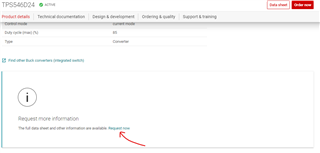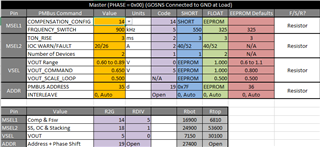Hi,
We have new design of board which we using TI TPS546D24 ( not TPS546D24A ).
I have issues of I2C interface.
The first problem is that the I2C address I'm getting in scan does not match the expected I2C address.
For example we connected ADRSEL pin through 10K OHM resistor to GND and instead of getting address 0x14 we got 0x18.
For example we connected ADRSEL pin through 4.64K OHM resistor to GND and instead of getting address 0x10 we got 0x11.
The only two cases it does match is if I float pin ADRSEL , I'm getting address 0x24 , and when I connect ADRSEL pin to GND, I'm getting back address 0x7F.
The second problem is if we access to the I2C address as scan result ,the transaction return an error.
We record the I2C transaction and we do see the device answer ACK on the address ,mean that the device is "understanding" that it is being access , but there is no return values.
I'm attaching here pictures of the I2C transaction access address 0x11 , you can see that the device does not return values during read , even that it return ACK when we write the address ( the first 8 bits ).
This is the case also with address 0x24 or 0x7F.
We measure pin BP1V5 - it's 1.5V
We measure pin VDD5 - it's 3.9V
Something is not working as expected in the I2C interface of the device.
Thanks,
Avi.






